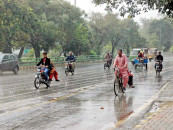Kerry-Lugar Bill and the unravelling of Pak-US ties
The way KLB was received in Pakistan, it appeared that Obama’s attempt to improve US-Pakistan relations had backfired

When Obama became president he ordered the wounding up of the Iraq war, the review of the Afghanistan policy and rebuilding of the relationship with Pakistan based on mutual interest, respect and trust.
Obama had inherited a fractured relation with Pakistan rooted in deep mistrust. Each side blamed the other for the crisis in Afghanistan and its subsequent impact on Pakistan. To normalise the situation, secretary of state Hillary Clinton had recommended moving away from the policy of coddling one man to restructuring a multilayer civilian assistance programme to boost infrastructure, energy and agriculture development. She also suggested making space in the hearts of the 170 million Pakistanis with the support of a positive reflection of the United States in the media. In other words, the new policy was a shift from nurturing relations with the Pakistan’s military to bringing the civilian government at the centre stage.
To this effect, an ambitious economic aid programme to the tune of $1.5 billion annually was floated. Named the Kerry-Lugar Berman Bill (KLB), this assistance was designed to support Pakistan’s multiple civilian initiatives over a period of five years. Since the bill was designed and coordinated in a way that it emphasised putting the civilian government in the saddle, it was viewed as an exercise to subvert the military’s position. Attempts were made to convince president Asif Ali Zardari to strike down the anti-military clauses. When he refused to oblige, the military leadership went public to mould opinion in its favour. The government on the other hand was all praise for the bill and even reflected upon bringing a resolution in support of it in the National Assembly. The bill had also demanded rigorous action from Pakistan to stem terrorism by dismantling terrorist bases in Quetta and Muridke, and to harness the power of organisations such as Jaish-e-Muhammad and Lashkar-e-Taiba that had been accused of attacking India. Considered condescending and tantamount to infringing on Pakistan’s sovereignty, the bill raised unprecedented uproar with an effect that the ‘bite’ in the bill was eventually removed and it was renamed as The Enhanced Partnership with Pakistan Act.
The way KLB was received in Pakistan, it appeared that Obama’s attempt to improve US-Pakistan relations had backfired. Apparently, the conditions in the bill according to analysts were more of a to-do-list, giving power to the US for intervening into Pakistan’s strategic affairs. The clauses, the experts believed, had in a way designated Pakistan as the hub of terrorism and exposed the trust deficit between Pakistan’s government and its army.
To Obama the bill was meant “to build schools and roads and hospitals and strengthen Pakistani democracy… so to avoid the mistakes of the past”.
Following the KLB, a major public diplomacy campaign was also launched to improve the US image. Secretary Clinton visited Pakistan in 2009 and held frank and unscripted ‘Town Hall’ sessions with Pakistani students and civil society. She even visited different shrines in Lahore and Islamabad. No effort however assuaged the anti-American sentiments and according to the June 2010 Pew Research Centre polls, only 17% of Pakistanis held a favourable view of the US.
For a better coherence at the organisational level, president Obama appointed the foreign policy heavyweight, late Richard Holbrooke, as his special representative for Afghanistan and Pakistan. Ambassador Holbrooke initiated a high-level ‘strategic dialogue’, involving 13 bilateral working groups (energy, agriculture, trade, education etc.)
All the effort came to a naught when president Obama travelled to India in November 2010, without stopping in Pakistan. Old wounds re-emerged, and issues such as the growing US indifference towards the Kashmir dispute, its civil nuclear cooperation with India, and their joint assessment of Pakistan, a country ‘supporting and originating’ terrorism, started pinching.
Obama’s India visit rendered hollow all his claims about creating mutually respected bilateral relations with Pakistan. Obama’s stay in the Taj Mahal Hotel, the central site of the 2008 Mumbai attack, which is blamed on Pakistan, was also interpreted as a deliberate attempt to encircle Pakistan on the issue. In her comment on the visit, Pakistan’s former ambassador to the US Maleeha Lodhi observed: “If there is an effort to build India up as a regional influence, a country that is assigned the responsibility for security in the region, it is unacceptable for Pakistan. Clearly, for deterrence to work, we need the minimum threshold of conventional balance.”
These developments were just the tip of the iceberg of a relationship that was dithering under the weight of mistrust. What followed in 2011 revealed the depth of division in the intent and purpose of both the countries on the war against terrorism.
The KLB did little to uplift Pakistan’s civilian face and remained slow at bringing the desired development in schools, hospitals and agriculture. Lack of transparency about the spending of foreign aid is another anomaly adding to the diversion of economic assistance on non-developmental projects. Though the media raised a clamour on the rising size of foreign debt, it rarely seeks an anatomy of the spending from the debt, an awakening that could help circumvent debt-economy and restore Pakistan’s international image as a self-reliant country.
Published in The Express Tribune, December 17th, 2020.
Like Opinion & Editorial on Facebook, follow @ETOpEd on Twitter to receive all updates on all our daily pieces.




1729685382-0/Untitled-design-(57)1729685382-0-208x130.webp)









COMMENTS
Comments are moderated and generally will be posted if they are on-topic and not abusive.
For more information, please see our Comments FAQ